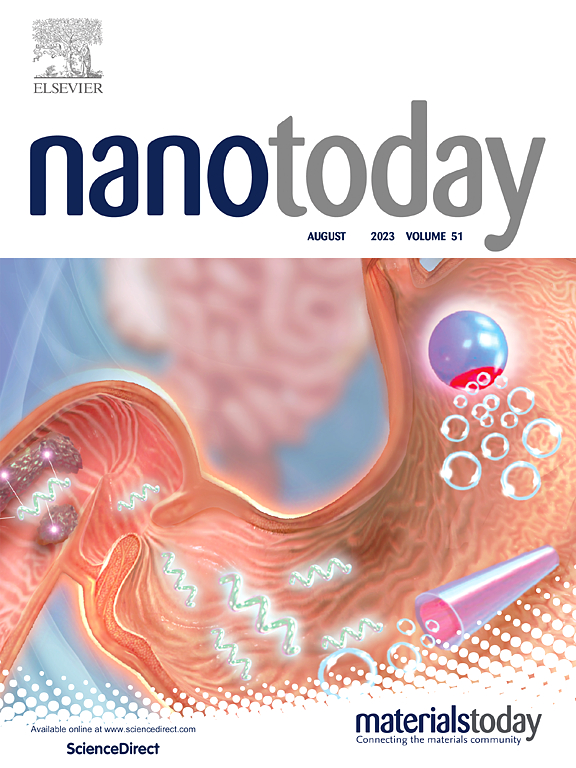Atomic-scale imaging of structural evolution from anatase TiO2 to cubic TiO under electron beam irradiation
IF 13.2
1区 材料科学
Q1 CHEMISTRY, MULTIDISCIPLINARY
引用次数: 0
Abstract
The introduction of oxygen vacancies into transition metal oxides can change their phases and electronic structures, subsequently impacting the physical and chemical properties. However, comprehensively understanding the phase transition process at the atomic scale remains challenging. Here, we directly image the atomic structural evolution from anatase TiO2 to cubic TiO under electron beam irradiation via in-situ scanning transmission electron microscope and electron energy loss spectroscopy, with a detailed analysis of the TiO/TiO2 interfacial structure. During this process, electron beam irradiation induces the formation of oxygen vacancies on the TiO2 surface, which drives the migration and rearrangement of Ti atoms. Theoretical and experimental methods are employed to provide insight into possible migration paths. Moreover, the formation of TiO is detected from other directions, but less distinct than that observed on the (010)TiO2 facet. This demonstrates an interesting facet dependence attributed to variations in the formation energies of surface oxygen vacancies. In addition, subsequent irradiation on TiO does not induce new structural change, but only surface roughening. Our findings offer valuable atomic-scale insights to the complex structural evolution as well as a new method to precisely manipulate phases of the transition metal oxides.
电子束辐照下锐钛矿二氧化钛到立方氧化钛结构演变的原子尺度成像
在过渡金属氧化物中引入氧空位可改变其相位和电子结构,进而影响其物理和化学特性。然而,在原子尺度上全面了解相变过程仍具有挑战性。在这里,我们通过原位扫描透射电子显微镜和电子能量损失光谱,对电子束辐照下从锐钛矿型二氧化钛到立方氧化钛的原子结构演变过程进行了直接成像,并对二氧化钛/二氧化钛界面结构进行了详细分析。在此过程中,电子束辐照诱导了 TiO2 表面氧空位的形成,从而推动了 Ti 原子的迁移和重排。我们采用理论和实验方法深入研究了可能的迁移路径。此外,还从其他方向检测到氧化钛的形成,但不如在 (010)TiO2 面上观察到的那么明显。这表明了一种有趣的面依赖性,归因于表面氧空位形成能量的变化。此外,对二氧化钛的后续辐照不会引起新的结构变化,而只是表面粗糙化。我们的研究结果为复杂的结构演变提供了宝贵的原子尺度见解,也为精确操纵过渡金属氧化物的相提供了一种新方法。
本文章由计算机程序翻译,如有差异,请以英文原文为准。
求助全文
约1分钟内获得全文
求助全文
来源期刊

Nano Today
工程技术-材料科学:综合
CiteScore
21.50
自引率
3.40%
发文量
305
审稿时长
40 days
期刊介绍:
Nano Today is a journal dedicated to publishing influential and innovative work in the field of nanoscience and technology. It covers a wide range of subject areas including biomaterials, materials chemistry, materials science, chemistry, bioengineering, biochemistry, genetics and molecular biology, engineering, and nanotechnology. The journal considers articles that inform readers about the latest research, breakthroughs, and topical issues in these fields. It provides comprehensive coverage through a mixture of peer-reviewed articles, research news, and information on key developments. Nano Today is abstracted and indexed in Science Citation Index, Ei Compendex, Embase, Scopus, and INSPEC.
 求助内容:
求助内容: 应助结果提醒方式:
应助结果提醒方式:


